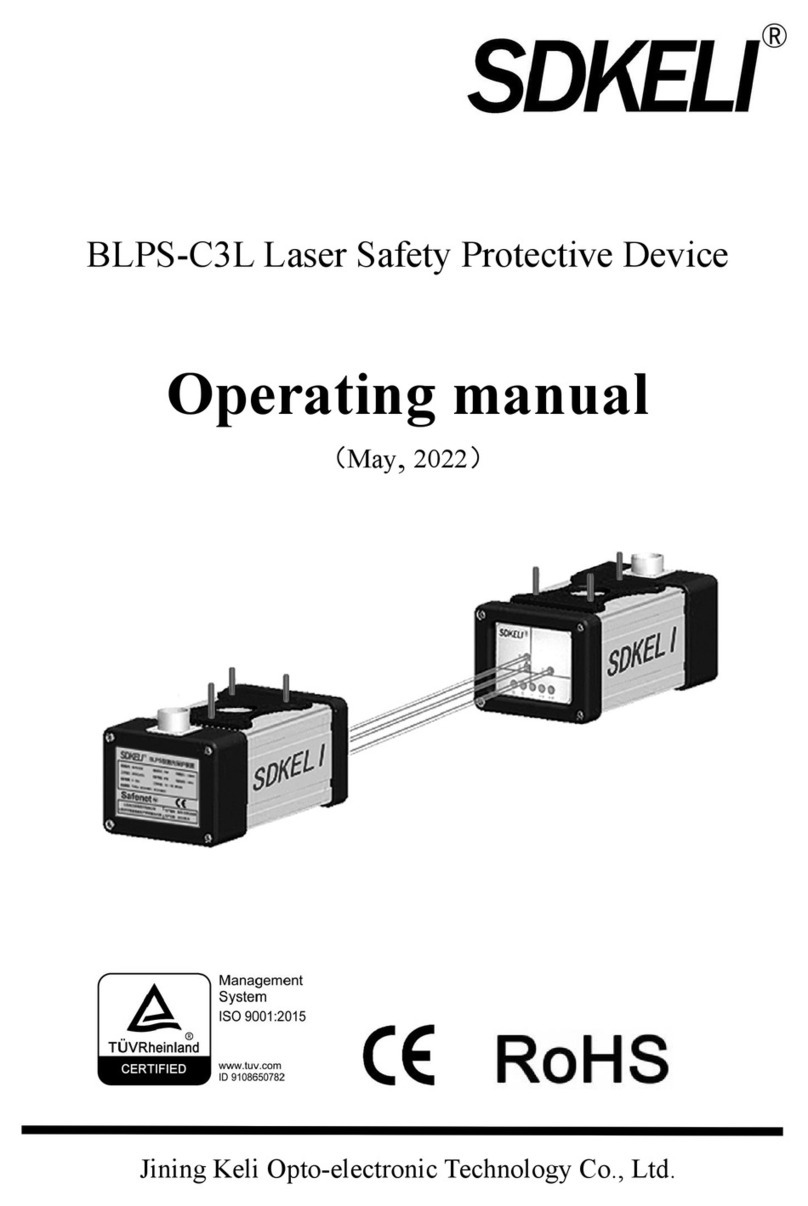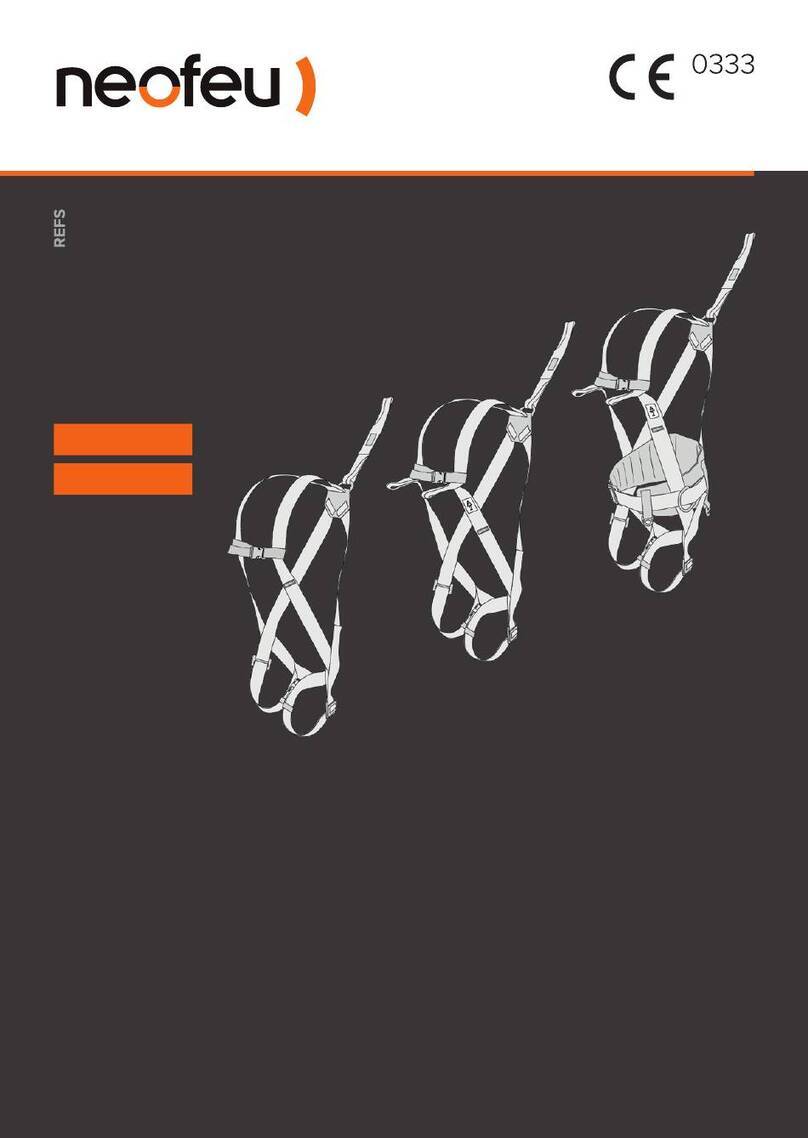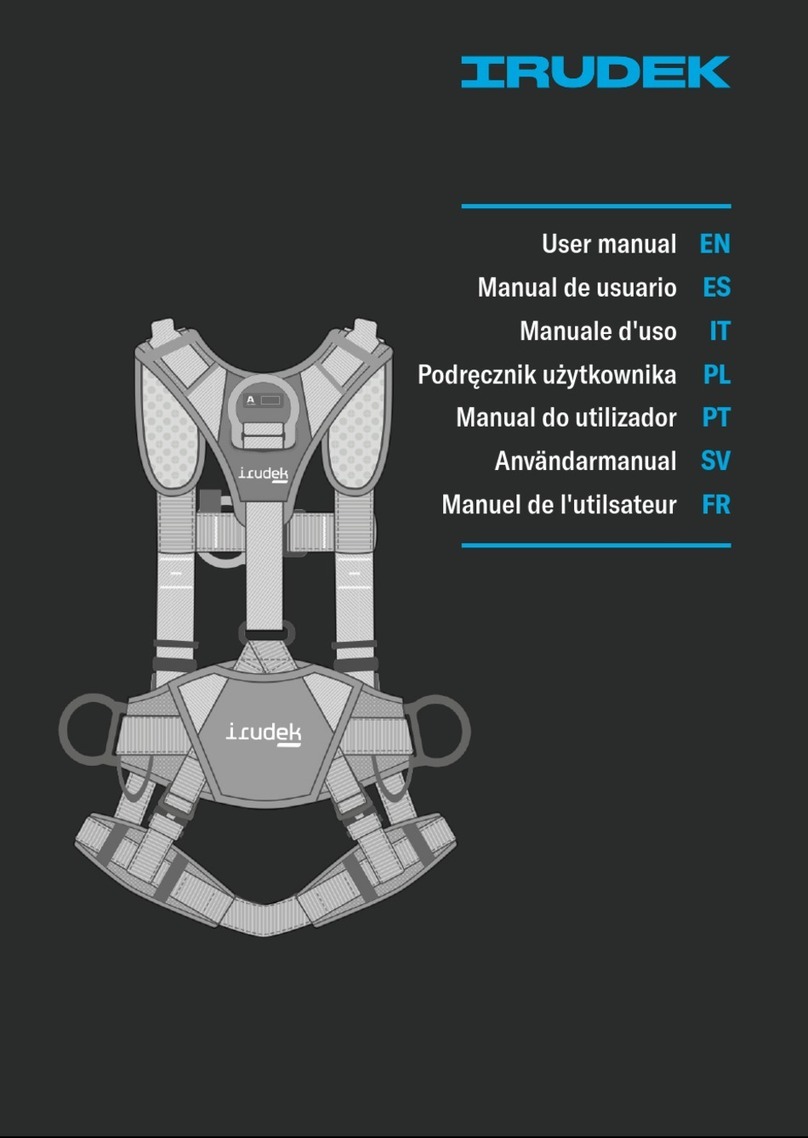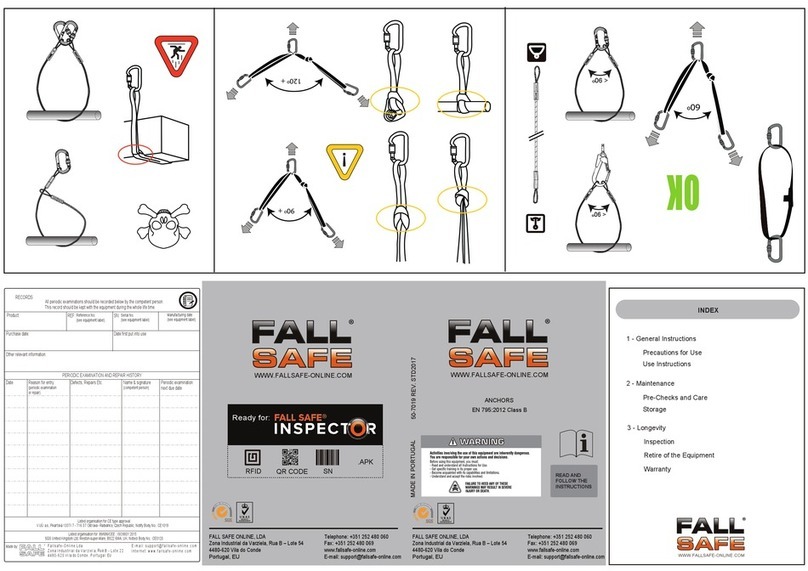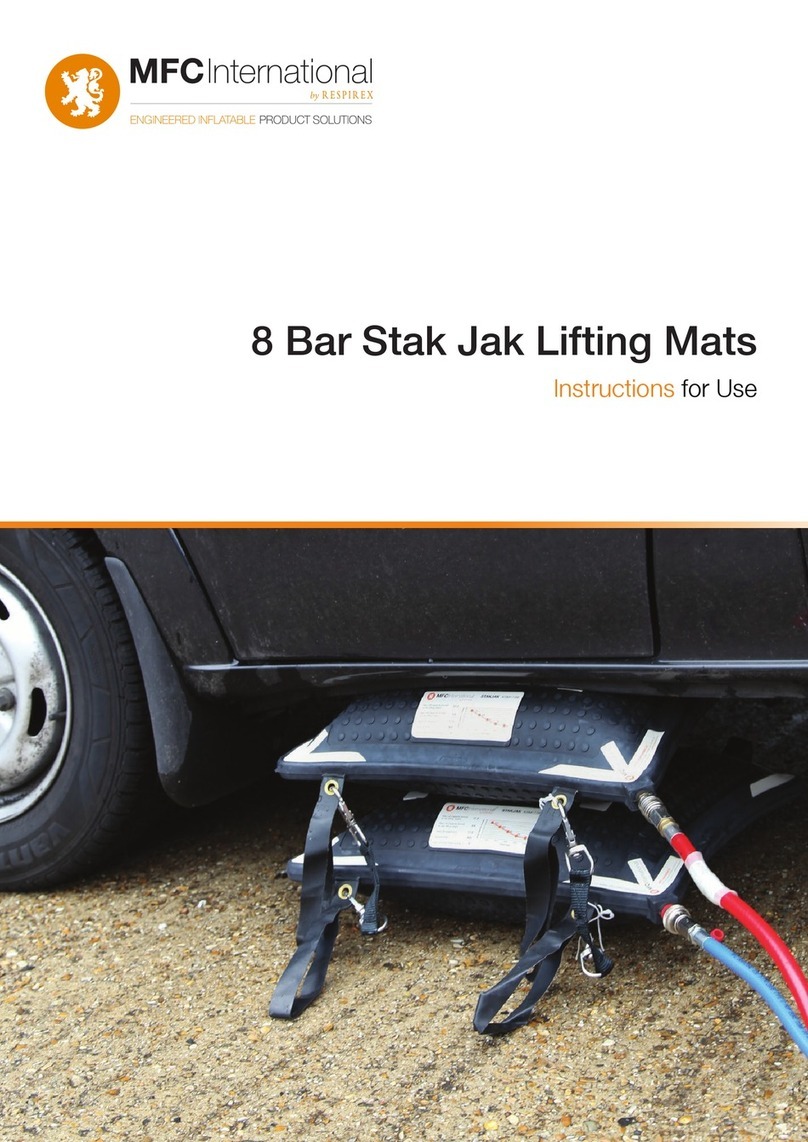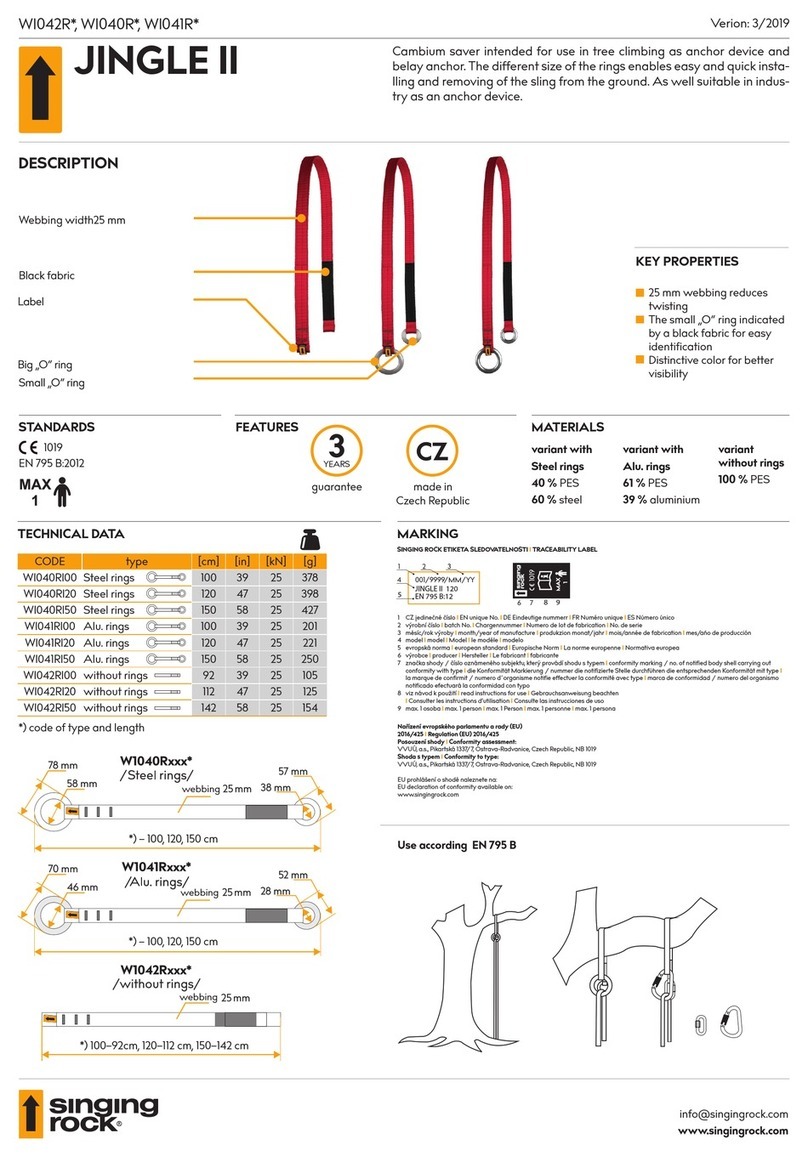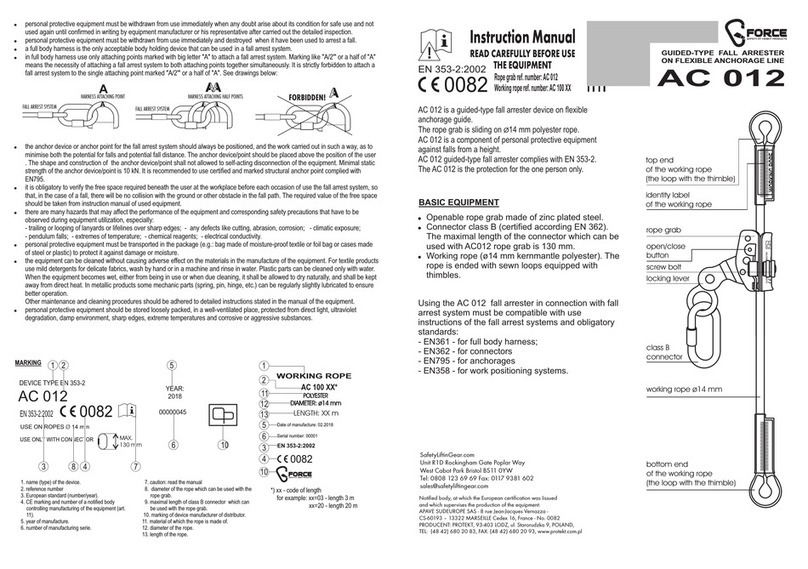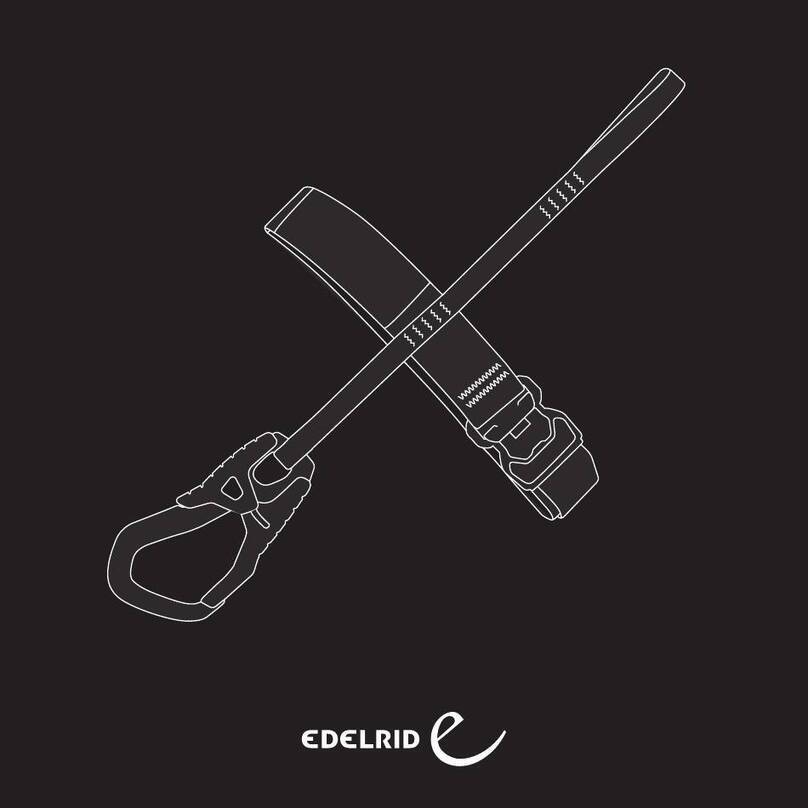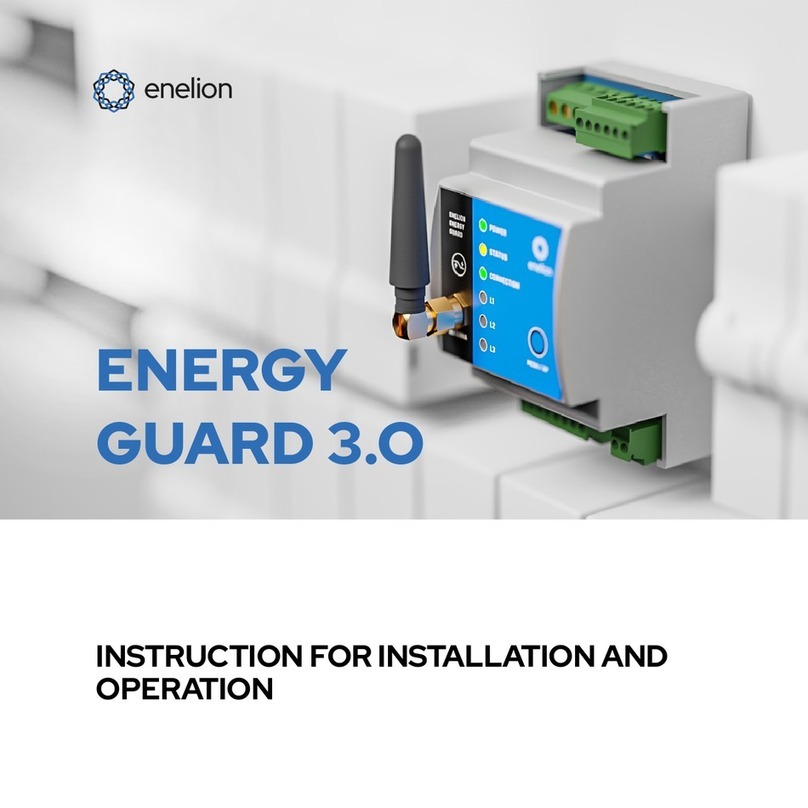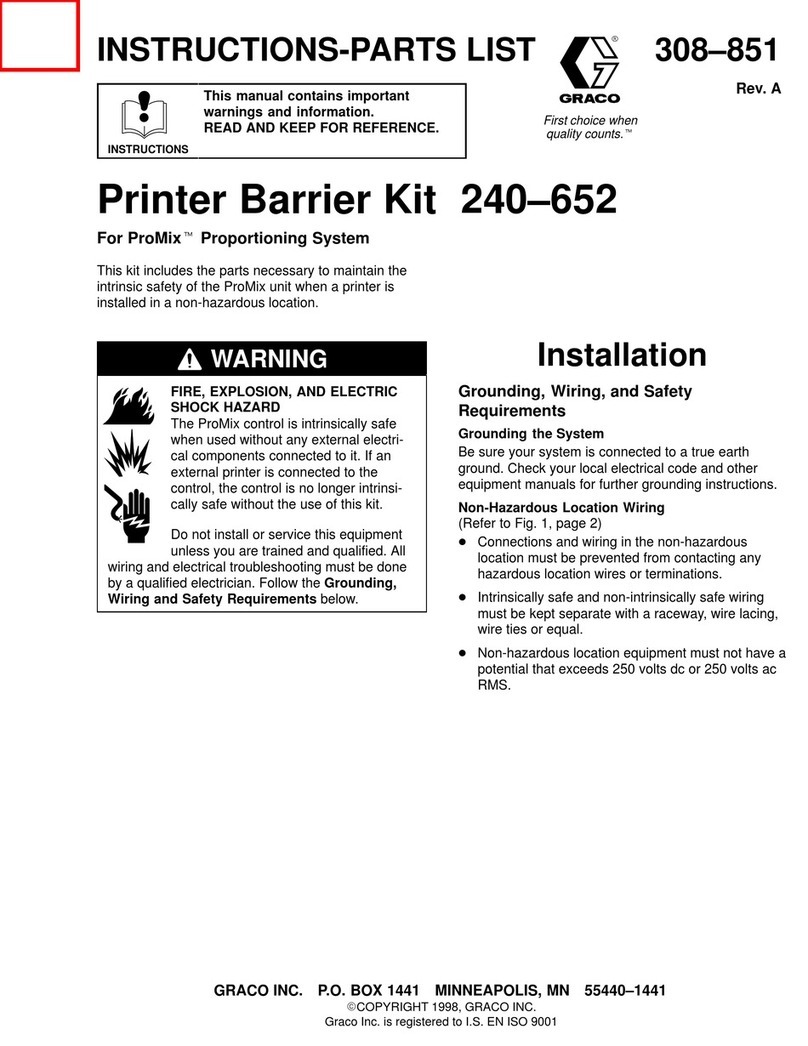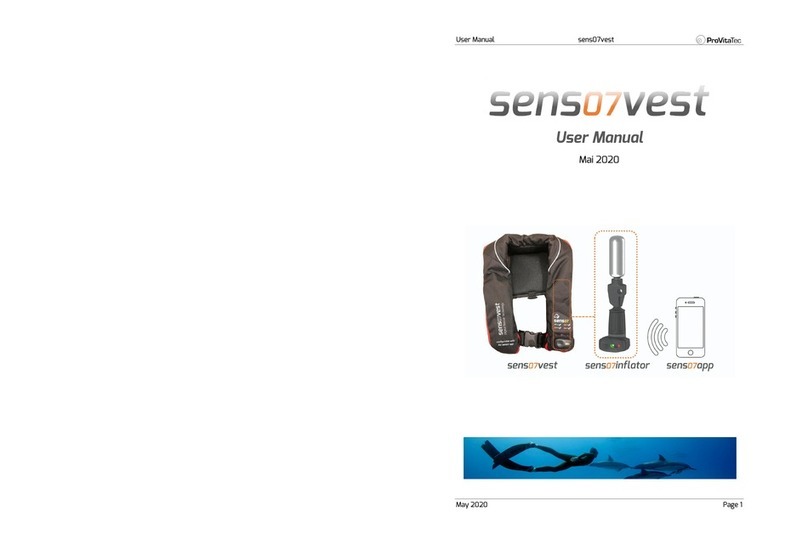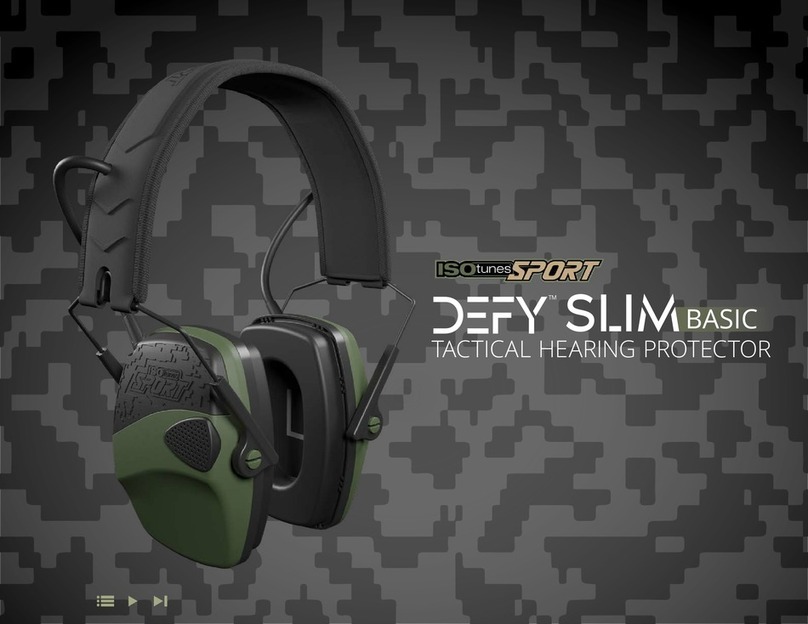ROCKY RESCUE RKD0086 Setup guide

USER INSTRUCTION, SAFETY
& TRAINING GUIDE
Rocky NFPA Compliant Footwear Styles:
RESCUE - RKD0086, RKD0091
BUNKER - RKD0087, RKD0092
NFPA 1971: Standard on Protective Ensembles for Structural Fire Fighting and Proximity Fire Fighting
NFPA 1999: Standard on Protective Clothing for Emergency Medical Operations
NFPA 1977: Standard on Protective Clothing and Equipment for Wildland Fire Fighting
• This guide should be removed only by the end user. In the event this guide becomes detached from the
footwear, turn this guide in to the authorities responsible for the care and maintenance of the footwear.
• You MUST read this guide and all footwear Safety, Cleaning, and Information labels before wearing.
• Burns are a function of time and temperature. First degree skin burns can occur when skin reaches a temperature
of as low as 118 degrees F.
• Fire burns at temperatures up to 2,000 degrees F or higher.
• This footwear provides limited protection against heat and flame. While wearing this footwear, you may be burned
without heat sensation or warning in some circumstances, and without any sign of damage to the footwear.
DANGER

| 2

3 |
1 Introduction .................................................................................................. 4
2 Definitions .................................................................................................... 5
3 Safety Checklist ............................................................................................ 7
4 Proper Use of Your Rocky NFPA Compliant Footwear .................................. 8
5 Know your Rocky NFPA Compliant Footwear: Construction,
Features, and Function ............................................................................... 10
6 Inspecting Your Rocky NFPA Compliant Footwear ...................................... 12
7 Donning and Doffing: Putting on and Removing Your Rocky NFPA
Compliant Footwear ................................................................................... 14
8 Checking Your Rocky NFPA Compliant Footwear for Compatibility
and Proper Fit .............................................................................................15
9 Rocky NFPA Compliant Footwear Marking Considerations ........................ 16
10 Using Your Rocky NFPA Compliant Footwear Safely:
How to Minimize the Risk of Injury ............................................................. 16
11 Cleaning, Decontaminating, and Disinfecting Your Rocky NFPA
Compliant Footwear ................................................................................... 22
12 Repair Methods for Rocky NFPA Compliant Footwear ............................... 27
13 Storing your Rocky NFPA Compliant Footwear .......................................... 27
14 Retiring your Rocky NFPA Compliant Footwear ......................................... 28
15 Disposing of Retired Rocky NFPA Compliant Footwear .............................. 30
16 Limited Warranty Information .................................................................... 30
17 Sources and Contact Information ............................................................... 32
18 Inspection, Cleaning, Repair, Retirement, and Disposal Record ................. 33
TABLE OF CONTENTS

| 4
1. INTRODUCTION
Congratulations on purchasing your new Rocky product!
Your Rocky NFPA compliant footwear (referred to throughout this guide as "footwear" or “boots”) is
designed to provide limited protection in various dangerous operations. The footwear and its components are
manufactured and certified under the performance requirements of the corresponding NFPA standards: NFPA
1971, NFPA 1977, and NFPA 1999.
This User Information and Safety Guide gives important instructions regarding the use, inspection, care,
maintenance, storage, and retirement of your Rocky NFPA compliant footwear. No one, except the end user,
should remove this guide from your Rocky NFPA compliant footwear. Immediately upon receipt of your
footwear, you should remove, carefully read, and save this guide for future reference.
This guide is a training tool to help you understand your NFPA compliant hazardous material emergency
footwear and how to use it in the safest possible manner during various dangerous operations.
This guide will train you to:
• Put on your footwear
• Wear your footwear safely
• Inspect your footwear
• Repair your footwear
• Clean and decontaminate your footwear
• Store your footwear
• Retire your footwear
For your personal safety be alert for important safety messages in this guide:
DANGER Indicates immediate hazards that will result in serious personal injury or death if not avoided,
or if instructions, including recommended precautions, are not followed. The signal word “DANGER”
is highlighted in red, both in this guide and on labels affixed to your footwear, to indicate the extreme
hazard of the situation.
WARNING Indicates potentially hazardous situations that could result in serious personal injury or death
if not avoided, or if instructions, including recommended precautions, are not followed. The signal word
“WARNING” is highlighted in orange on labels attached to your footwear, and in black in this guide.
CAUTION Indicates potentially hazardous situations or unsafe practices that could result in minor
or moderate personal injury or product or property damage if instructions, including recommended
precautions, are not followed. The signal word “CAUTION” is highlighted in gray in this guide.
DANGER
WARNING
CAUTION

5 |
2. DEFINITIONS
Afterflame Time – The length of time for which a material, component, or chemical protective suit continues
to burn after the simulated chemical flash fire has ended.
Biological Agent – Biological materials that are capable of causing disease or long-time damage to the
human body.
Compliance/Compliant – Meeting or exceeding all applicable requirements of NFPA standards 1971, 1977,
and 1999.
Component(s) – Any material, part or subassembly used in the construction of the compliant product.
Ensemble Elements – The compliant products that provide protection to the upper and lower torso, arms,
legs, head, hands, and feet.
Entry Fire Fighting – EXTRAORDINARILY specialized fire fighting operations that can include the activities of
rescue, fire suppression, and property conservation at incidents involving fires producing very high levels of
conductive, convective, and radiant heat; such as aircraft fires, bulk flammable gas fires, and bulk flammable
liquid fires. Highly specialized thermal protection from exposure to extreme levels of conductive, convective,
and radiant heat is necessary for persons involved in such EXTRAORDINARILY specialized operations, and
because direct entry into the flames is made. Footwear that is not rated NFPA 1971 is NEVER to be used for
entry fire fighting or any direct contact with flames or molten metals, and does not provide the required level
of protection. Entry fire fighting is not structural fire fighting.
Exposure Incident – Specific contact of the following with blood or other potentially infectious materials: 1)
eye; 2) mouth or other mucous membranes; 3) non intact skin; or 4) parenteral contact.
Follow-Up Program – The sampling, inspections, tests, or other measures conducted by the certification
organization on a periodic basis to determine the conducted compliance of labeled or listed products that are
being produced by the manufacturer to the requirements of this standard.
Footwear – The term footwear used throughout this guide refers ONLY to Rocky NFPA compliant footwear.
Footwear is an element of the protective ensemble designed to provide limited protection required by the
NFPA Standards to the foot, ankle, and lower leg. Footwear is NOT Entry or Proximity footwear.
Footwear Upper – That portion of the footwear above the sole, heel, or insole.
Hazardous Materials – A substance (solid, liquid, or gas) that when released is capable of creating harm to
people, the environment, and property.
Hazardous Materials Emergencies – Incidents involving the release, or potential release, of hazardous
materials.
Inner Liner – The liner portion of the NFPA compliant footwear consisting of the thermal liner layer and the
moisture barrier layer sewn together.
Interface Area – An area of the body where the protective garment, helmet, gloves, and footwear, or SCBA
facepiece meet. Interface area includes, but is not limited to, …the trouser/footwear area.
Liquid Splash-Protective Footwear – the element of the protective ensemble, or the item of protective

| 6
clothing that provides liquid chemical protection and physical protection on the feet, ankles, and lower legs.
Maintenance – Procedures for inspection, repair, and removal from service of liquid splash protective
ensembles or clothing.
NFPA – Acronym for National Fire Protection Association. A private sector, volunteer-based, standard-making
organization that develops guidelines related to fire protection and prevention.
NFPA Compliant Footwear – Footwear certified by a private, third party certification organization (for
example, Underwriters’ Laboratories) to meet at the time of manufacturing the design and performance
requirements of the valid NFPA standards: NFPA 1971, NFPA 1977, and NFPA 1999.
Protective Ensemble – Multiple elements of personal equipment designed in accordance with the NFPA
standards to provide a limited degree of protection for responders from adverse exposures to the inherent
risks of structural fire fighting operations, and certain other emergency operations. The elements of the
protective ensemble are coats, trousers, coveralls, helmets, gloves, footwear, and interface components.
Proximity Fire Fighting – Specialized fire fighting operations that can include the activities of rescue, fire
suppression, and property conservation at incidents involving fire producing very high levels of conductive,
convective, and radiant heat; such as aircraft fires, bulk flammable gas fires, and bulk flammable liquid
fires. Specialized thermal protection from exposure to high levels of radiant heat is necessary for persons
involved in such operations due to the scope of these operations and the close distance to the fire at which
these operations are conducted, although direct entry into flame is NOT made. These operations usually are
exterior operations but might be combined with interior operations. Proximity fire fighting is not structural
fire fighting but might be combined with structural fire fighting operations. Proximity fire fighting also is not
entry fire fighting.
Structural Fire Fighting – The activities of rescue, fire suppression, and property conservation in buildings,
enclosed structures, vehicles, marine vessels, or like properties that are involved in a fire or emergency
situation.
Useful Life – The period of time that footwear, which has been properly cared for, may provide reasonable
limited protection. Useful life of footwear is discussed in more detail in Section 14 of this guide. Nothing
in this definition shall alter, affect, or extend the warranties set forth in Section 16. EXCEPT AS SET FORTH
IN SECTION 16 OF THIS GUIDE, ROCKY MAKES NO OTHER WARRANTIES, EXPRESS OR IMPLIED, INCLUDING,
BUT NOT LIMITED TO, ANY WARRANTIES OF MERCHANTABILITY, FITNESS FOR ANY PARTICULAR PURPOSE, OR
USEFUL LIFE.

7 |
3. SAFETY CHECKLIST
Do not use this Rocky NFPA compliant footwear until you have checked “YES” to the following:
1. Have you completed professional training in fire fighting techniques, or in hazardous materials
emergency incident operations involving liquids, and the proper use of NFPA compliant footwear?
oYes oNo
2. Have you read and understood all the instructions and warnings throughout this guide, as well as all
the label on the footwear?
oYes oNo
3. Will you regularly inspect your footwear inside and out for any tears, holes, thin spots, worn areas,
color change, dirt, contaminants, leaks, embrittlement, or any other conditions discussed in Section 6
of this guide?
oYes oNo
4. Have you studied the limitations of your footwear as described throughout this guide?
oYes oNo
5. Have you checked to make sure that your footwear fits you properly in accordance with Section 8 of
this guide?
oYes oNo
6. Have you, your safety officer, or another authorized person made plans to
ensure that your footwear is used, inspected, maintained, stored, and
retired according to instructions in this guide?
oYes oNo
7. Have you read, do you understand, and do you assume the risks and
responsibilities listed in the Personal Responsibility Code? See FIG. 1
and back cover of this guide.
oYes oNo
If you answered NO to any of the questions, DO NOT WEAR THIS FOOTWEAR
until you have read the appropriate sections of this guide and have been
properly trained by qualified instructors.
FIG. 1
Personal Responsibility Code.
Also shown on back cover of
this guide.
PERSONAL RESPONSIBILITY CODE
PERSONAL RESPONSIBILITY CODE
The member companies of FEMSA that provide emergency
response equipment and services want responders to know and
understand the following:
1. Firefighting and Emergency Response are inherently
dangerous activities requiring proper training in their hazards
and the use of extreme caution at all times.
2. IT IS YOUR RESPONSIBILITY to read and understand
any user’s instructions, including purpose and limitations,
provided with any piece of equipment you may be called on
to use.
3. IT IS YOUR RESPONSIBILITY to know that you have been
properly trained in Firefighting and/or Emergency Response
and in the use, precautions, and care of any equipment you
may be called upon to use.
4. IT IS YOUR RESPONSIBILITY to be in proper physical
condition and to maintain the personal skill level required to
operate any equipment you may be called upon to use.
5. IT IS YOUR RESPONSIBILITY to know that your equipment is
in operable condition and has been maintained in accordance
with the manufacturer’s instructions.
6. Failure to follow these guidelines may result in death, burns or
other severe injury.
Fire and Emergency Manufacturers and Service Association, Inc.
PO Box 147, Lynnfield, MA 01940 • www.FEMSA.org
© 2020 FEMSA . All Rights Reser ved.
DANGER
DANGER

| 8
4. PROPER USE OF YOUR ROCKY NFPA
COMPLIANT FOOTWEAR – PROTECTING
HEALTH CARE WORKERS FROM OCCUPATIONAL
EXPOSURE TO BLOODBORNE PATHOGENS
The Occupational Safety and Health Administration (OSHA) of the U.S. Department of Labor places the
responsibility for selection, approval, maintenance, inspection, and training in the proper use and limitations
of safety gear on your department, team, or employer. (Code of Federal Regulations Volume 29, Section
1910.132, General Requirements of Subpart I, Personal Protective Equipment). By doing this, OSHA is
recognizing a simple truth: how you use your protective clothing is beyond the manufacturer’s control.
Your department or employer controls the circumstances under which the protective ensemble will be
used, and is in the better position to assess the hazards at the emergency scene, to direct the appropriate
selection and use of safety equipment, including protective ensembles. Consistent with the OSHA regulations,
your protective ensemble is offered for your department (paid or volunteer), team, or employer to evaluate
and decide for itself whether or not the protective ensemble will provide an acceptable level of protection
for any particular emergency operation. It is recommended that your department or employer conduct its
own testing, evaluation and training in conjunction with qualified safety experts before issuing protective
ensemble elements for use by its members. Whether to use protective ensemble in a particular incident,
whether to enter a particular situation, whether to remain in a particular situation, and similar decisions are a
matter to be decided by your department or employer at the scene on a case by case basis. Since, obviously,
the manufacturer of your protective ensernble element cannot know in advance all of the many conditions
existing at each scene, the appropriate use of your protective ensemble, and its suitability for that use, must
be decided by your department or employer at each and every scene. The manufacturer makes no guarantees
or warranties, express or implied, that your protective ensemble is fit for a particular purpose. (See Warranty
Information on inside back cover.) Your protective ensemble must be used only under the direct supervision
of your department or employer in a manner consistent with NFPA 1500 (Standard on Fire Department
Occupational Safety Health Program), 29 CFR 1910.132 referenced earlier, and 29 CFR 1910.1030 (Protecting
Health Care Workers from Occupational Exposure to Blood-borne Pathogens.)
This footwear is designed to provide LIMITED protection under the requirements of the NFPA standards
to the foot, ankle, and lower leg against hazards in STRUCTURAL FIRE FIGHTING OPERATIONS, WILDLAND
OPERATIONS, NON-FIRE RELATED RESCUE OPERATIONS, EMERGENCY MEDICAL OPERATIONS, AND VICTIM
EXTRICATION, INCLUDING:
• heat and flame
• liquid splash from 7 common hazardous liquid chemicals and 5 common fire ground chemicals
(See Section 10 of this guide for more information)
• penetration of blood and other body fluids
• environmental, including moisture and cold weather
• physical hazards, including puncture, crushing, cuts and abrasion
• rain and hose steam water

9 |
Do not use for ANY
proximity or entry
fire fighting.
Do not use for
direct contact
with flames or
molten metal.
Do not use for
protection against
all hazardous
chemical agents.
Do not use
for protection
against hazardous
radiological agents.
Do not use
for protection
against hazardous
biological agents.
DO NOT use this footwear for the following:
• Proximity or entry fire fighting operations (See Definitions)
• Activities requiring direct contact with flames or molten metal
• Protection against all hazardous material, biological, or radiological agents
Fire fighting personnel who are exposed to a flashover, backdraft, or other flame and high heat
environments are at extreme risk for extensive burn injuries and death even while wearing their
complete NFPA 1971 Structural Fire Fighter Protective Ensemble!
Controlled lab tests in the NFPA standard “cannot be deemed as establishing performance levels for all
situations to which personnel can be exposed”. You should always use extreme caution in all situations
to avoid the risk of injuries.
Protective properties in new NFPA compliant footwear will diminish as the product is worn and ages.
To reduce the risk of injuries, you MUST follow the recommendations in this guide for inspection and
retirement of your footwear to ensure that the footwear is not used past its useful life.
If wearing a zippered style, you must fasten all closures during all times the footwear is worn, or there
will be gaps in your protection, and wear will occur in the heel area, greatly decreasing the useful life
of the footwear and voiding the warranty.
DANGER
DANGER
WARNING
WARNING
WARNING
Emergency response personnel can encounter many common liquids during normal performance of their
duties. The reference to limited protection from liquid splash from 7 common hazardous liquid chemicals
and 5 common fire ground chemicals should not be interpreted to mean that the footwear is suitable, or is
permitted to be used for protection to the wearer during any hazardous materials situation.

| 10
5. KNOW YOUR ROCKY NFPA COMPLIANT
FOOTWEAR – CONSTRUCTION, FEATURES,
AND FUNCTION
In order to understand the limits of protection provided by your Rocky NFPA compliant footwear, you should
study its construction, features, and function.
5.1 OVERVIEW
Rocky NFPA footwear provides a limited barrier against penetration from sharp objects and liquids
contacted on the fire grounds. Because it is made of special heat and flame resistant materials,
hydrophobic leather, and rubber soles, it provides limited resistance to heat and flame for brief
periods of time, without the boot combusting and burning.
5.2 LAYERED STRUCTURE
Your Rocky NFPA compliant footwear is made with three primary layers: a leather outer layer, a
moisture barrier, and an inner lining. The StedFast®inner lining and moisture barrier are secure
inside the boot and are designed not to come out of the boot while doffing.
5.3 LEATHER OUTER LAYER
The outer layer consists of a hydrophobic, breathable leather that provides initial limited protection
against, heat, flame, abrasions, and punctures.
5.4 INNER LAYER
The inner lining and moisture barrier are sewn together to make up the inner layer.
Moisture Barrier
The moisture barrier is a film on a substrate which reduces the amount of water from the
environment that might penetrate to the inside of the footwear. The moisture barrier is bonded to a
woven or nonwoven substrate to give it strength and durability. All breathable moisture barriers have
the ability to prevent liquid moisture from passing through, while allowing the passage of moisture
vapor. This allows some body heat to escape the inner layers and move outside the footwear. This
promotes the evaporative cooling of the fire fighter’s feet, ankles, and lower legs.
Inner Lining
The inner lining attached to the moisture barrier is a breathable fabric that protects the moisture
barrier and absorbs perspiration, allowing it to pass through the moisture barrier.
OTHER IMPORTANT SAFETY FEATURES:
Sole: The nitrile rubber lug sole with self-cleaning tread is resistant to oil, fuel, heat, and acid.
Toe Protection System: The footwear has a protective steel toe and a rubber toe cap to provide
limited protection from puncture, crushing and abrasions.
Closure Systems: Zip/lacing systems are included on some models.
Removable Insole: The anatomically formed insole can be removed to help promote drying.
It is also replaceable.

11 |
Puncture Resistant Bottom Plate: The Footwear has a flexible puncture resistant layer of material to resist
sharp objects from penetrating the boot.
Leather Back Straps/Pull-on Loops: Provides a grasping mechanism to allow the user to more easily pull
the footwear on.
Label: Located on the inside of the lining, the label contains a statement indicating that the footwear was
manufactured in compliance with the applicable NFPA standards, and contains information regarding the
date of manufacture, the serial number, and the name of the manufacturer.
FIG. 2
Key elements of Rocky
NFPA compliant Rescue
RKD0086, RKD0091
Fire Resistant
Leather
Thermal Barrier BBP
(Blood Borne Pathogen)
Membrane
ASTM F2413
Composite
Safety Toe
Vibram®
Fire & Ice
Outsole
FIG. 3
Key elements of Rocky
NFPA compliant Bunker
RKD0087, RKD0092
Fire Resistant
Leather
Thermal Barrier BBP
(Blood Borne Pathogen)
Membrane
Rubber Heel
Guard Rubber Toe
Kick Guard
ASTM F2413
Composite
Safety Toe
Vibram®
Fire & Ice
Outsole

| 12
6. INSPECTING YOUR ROCKY NFPA
COMPLIANT FOOTWEAR
6.1 PREPARATION
Read the Information Label (See Section 5 of this guide for location).
6.2 FREQUENCY
You should inspect your footwear at the following times: 1.) Upon receipt of your new footwear
or replacement component; 2.) At least monthly thereafter during the useful life of the footwear;
3.) After exposure to heat, flames, chemicals, or fire fighting agents (including AFFF foam and water);
4.) After exposure to body fluids (including blood); 5.) After washing, repair or decontamination.
You must inspect your footwear, at a minimum, at the above frequency intervals to detect more
obvious damage and deterioration. In addition, you might sense deficiencies in thermal protection
by feeling heat more quickly or more easily than before, or get wet from rain or hose streams leaking
through the moisture barrier materials or seams. Additionally, even outside of the contexts listed
above, whenever you suspect a potential problem or suspect that the footwear’s protective qualities
might be degraded, your footwear should be inspected by trained personnel.
6.3 INSPECTION PROCESS AND CRITERIA
1. Criteria
Inspection of NFPA footwear should be done in compliance with NFPA 1851 standard on Selection,
Care, and Maintenance of Protective Ensembles for Structural Fire Fighting and Proximity Fire
Fighting, Section 6.2.2.5 and 6.3.5.5
2. Preparation
A. Wear appropriate protective gloves during inspection.
B. Place footwear on a clean surface in a brightly lighted area.
3. Outer Layers
A. Leather Layer, Rubber Toe Cap, and Sole: Examine for dirt, thin spots, holes, tears,
embrittlement, burns, abrasions, melted areas, and worn spots.
a. Discoloration could be a sign of overexposure to light or heat.
b. Embrittlement, cracking, or burns are a sign that other layers may be worn out or damaged
and may need to be replaced.
d. Soles: If one or more lugs on the sole is worn away, the footwear needs to be resoled.
B. Closure on zipper-closure footwear:
a. Check for functionality and corrosion.
Most performance properties of the footwear & its components cannot be tested by the user in the field.
WARNING

13 |
b. Check that the zipper anchor and zipper loop are securely attached to the footwear.
c. Check that laces are securely tied, and all extra lace is behind the attachment to
avoid snagging.
d. Check for signs of burns, melting, dirt, or other damage to the laces.
C. Retroreflective Trim: Inspect footwear for missing, burned, melted, or torn retroreflective trim.
D. Pull-on Boot Straps: Examine all components to make sure they are securely attached
to the footwear.
E. Stitching and Seams: Examine all seams for loose threads, breaks, skipped stitches,
or weakness.
4. Inner Layer:
A. Fabric: Examine for dirt, thin spots, holes, tears, embrittlement, burns, abrasions,
and worn spots.
a. Inspect by running your hands across the inner liner and feel for thin areas or ridges
that indicate breakdown. Special attention should be given to the heel area.
b. Discoloration could be a sign of overexposure to light or heat.
B. Stitching and Seams: Examine all seams for loose threads, breaks, skipped stitches,
or weaknesses.
C. Label: Locate and inspect the label on the inside of the footwear. Check for legibility,
abrasions, or tears.
D. Removable insole: check that it is thoroughly dry, and not worn or compressed.
When damage is noted, the footwear must be repaired by a trained service provider, or retired and disposed
of in accordance with disposal procedures in this guide. For more information on cleaning, contact Rocky
6.4 RECORDKEEPING
For manual records, record all inspections and your results on the Inspection, Cleaning, Repair,
Retirement, and Disposal Record located in the back of this guide. Maintain this form unless your
organization has provided you with a comparable record keeping method for this purpose.

| 14
7. DONNING & DOFFING – PUTTING ON AND
REMOVING YOUR ROCKY NFPA COMPLIANT
FOOTWEAR
PREPARATION
Before donning, check to make sure that the footwear, including the inner layer and inner sole, is thoroughly
dry, and that the inner sole is placed in the bottom of the footwear. If there are laces, the laces must be tied
securely. Before the first use of the zipper footwear, adjust the fit by loosening the laces, pulling the footwear
onto foot, closing the zipper, then tightening the laces for a secure and comfortable fit. Tuck ends of laces
between the lace system and tongue area.
DONNING (PUTTING ON YOUR FOOTWEAR)
For the pull-on style, use the pull-on straps, and pull the footwear securely onto your foot.
When using the zippered style, check to be sure the footwear is unzipped, then pull the footwear securely
onto your foot, and pull the zipper closed.
Check and adjust for a comfortable, secure fit.
Before entering a hazard area, you must have a partner inspect the area where the footwear interfaces
with your trousers in order to assure proper overlap of all components of your NFPA Protective Ensemble,
including trousers and footwear.
DOFFING (REMOVING YOUR FOOTWEAR)
1. First, never remove Protective Ensemble until you are certain that you are safely removed from
the hazard area. Always wear full NFPA Compliant Protective Ensemble during all phases of
emergency operations.
2. When you are ready to remove your NFPA Compliant Protective Ensemble, you should first remove
your gloves and helmet, except as provided by step 4 below.
3. Next, you should remove your SCBA cylinder, and begin to remove your garments. Remove the coat
first, then remove footwear by gently pulling off your footwear. Pull the zipper completely
downward, and then remove the footwear.
4. If your footwear is contaminated with hazardous chemicals, you should remove them using
protective gloves and carefully avoiding any contact with contaminated parts of the footwear.
Be sure to place the footwear in a plastic bag to allow safe handling. Bring this to the immediate
attention of your fire department or employer.
5. During and after doffing, always look for signs of chemicals, body fluids, or other contamination,
and for signs of wear or damage. See Cleaning, Decontamination, and Disinfecting Procedures,
Section 11, and Inspection Procedures, Section 6 of this guide.
Most performance properties of the footwear & its components cannot be tested by the user in the field.
WARNING

15 |
8. CHECKING YOUR ROCKY NFPA COMPLIANT
FOOTWEAR FOR COMPATIBILITY AND
PROPER FIT
SIZE AND FIT
In order to determine the proper size, you must ensure that your foot size is measured either with the use of
a Brannock device or by trying on sizing samples of the model you, or your department, are purchasing.
Footwear should have adequate room for toes to lay flat in the boot, and there should not be too much
movement in the heel area. Failure to ensure the proper fit of your NFPA compliant footwear could result in
serious injury. Footwear that does not properly fit will have a shortened useful life. If the footwear does not
seem to fit properly, you should check the size on the label to ensure it is your size. If the footwear still does
not fit properly, try a different size to ensure a proper fit.
Make sure that the lower edges of your NFPA compliant trousers overlap the tops of your footwear by 4-6
inches when standing. In addition, check to see if all layers of the trousers overlap footwear in any body
position during use, including when crawling on the ground. Check using NFPA positions A and B,
pictured below.
For the first use of the zipper footwear, adjust the fit by loosening the laces, pulling on footwear, closing
zipper, then tightening the laces for a secure and comfortable fit. Tuck ends of laces between the lace
system and tongue area.
FIG. 4
NFPA Position A
FIG. 5
NFPA Position B
Never wear NFPA compliant footwear that fits improperly. If you have a question, or there is a problem
with the fit of the footwear, contact your safety officer for assistance. Wearing footwear that does not fit
properly could reduce protection and result in severe burns, cuts, or abrasions, or dangerously restrict
your ability to avoid injuries in an emergency situation.
DANGER

| 16
WARNING
9. ROCKY NFPA COMPLIANT FOOTWEAR
MARKING CONSIDERATIONS
10. USING YOUR ROCKY NFPA COMPLIANT
FOOTWEAR SAFELY – KNOW THE RISKS
TO MINIMIZE THE CHANCE OF INJURY
9.1 The footwear information label indicates the date of manufacture and the serial number of your Rocky
NFPA compliant footwear.
9.2 Do not apply letters, emblems, trim, and/or other types of identification that may penetrate the
moisture barrier.
NEVER MARK ON THE LABEL ON YOUR FOOTWEAR!
The footwear is designed in compliance with NFPA standards to protect the user against specific hazards
associated with operations and non-fire related rescue operations, emergency medical operations, and
victim extrication. This section indicates the hazards associated with these activities, and specific warnings
concerning the proper safe usage of your footwear.
10.1 PREPARATION
Before beginning any emergency operation where there is fire or a threat of fire, your footwear should
be donned according to the procedures in Section 7 of this guide, and checked by another person for
proper overlap at the interface areas.
Do not apply letters, emblems, trim and/or other types of identification that may penetrate the moisture
barrier. Do not write on the inner lining. Damage to the moisture barrier could result in the penetration
of water into your Footwear, reducing protection and resulting in scalding or burns.
Always wear clean and thoroughly dry footwear in any fire fighting operation. Soiled or contaminated
footwear may be combustible, causing serious burns to the wearer if exposed to high heat or flame.
DANGER

17 |
DANGER
FIRE CHARACTERISTICS
10.2 FIRES ARE INHERENTLY DANGEROUS, UNPREDICTABLE ENVIRONMENTS
Temperatures can range upwards of more than 2,000° F in a matter of seconds. It is important to
understand these conditions in order to maximize your protection and to understand the limited
ability of your footwear to protect you from all hazards that may be present in a fire.
10.3 BURN HAZARDS: TYPES OF HEAT TRANSFER
There are three types of heat transfer: conduction, convention, and radiation. Conduction is the direct
transfer of heat through contact with a hot object. Convection is the transfer of heat through a
medium; for example, air. Thermal radiation is the transfer of heat in the form of light energy, directly
from flames or reflected from hot surfaces. Fire fighters experience all three types of heat in a fire,
and must understand their effects on NFPA Compliant Footwear.
Conduction: The danger of being burned by conductive heat while wearing NFPA compliant
footwear is frequently underestimated. You can be burned by conductive heat when you contact
heated surfaces or objects. This very real hazard is significantly increased if your footwear is wet,
either from damage to the moisture barrier, or from outside water entering from the top opening.
Water can provide a conductive bond between surfaces that might not otherwise touch, increasing
the chances of heat conduction. Water is a very poor insulator; it conducts heat with dangerous and
unpredictable efficiency.
Convection: Convected heat travels through the air, even if there
is no immediate appearance of fire. Convected heat can elevate
the temperature of your footwear to a point at which conductive
heat burns can easily occur, particularly if your footwear is wet
or damp.
Thermal Radiation: Thermal Radiation is the transfer of heat in
the form of light energy into a material, directly from flames or
reflected from hot objects. Factors that affect the speed of
radiant heat transfer include the temperature difference between
two surfaces, their distance from each other, and the reflectivity
of each surface.
Moisture in protective footwear can reduce insulation and lead to scalding burns. Always make sure
your footwear is dry before wearing it in any emergency situation. Dry your footwear and the inner sole
between runs to reduce the risk of serious burn injuries. Inspect your footwear for holes, and always
secure the closures to prevent the penetration of moisture from the fire environment. Follow Inspection,
Maintenance, Storage, Repair, Retirement, and Disposal Instructions in this guide to make sure that the
footwear is not worn out, or in an unsafe condition.
FIG. 6
Radiant heat from hot surfaces and
flames can cause burns.

| 18
DANGER
DANGER
DANGER
DANGER
10.4 BURNS
Burns are a function of time and temperature. The higher the temperature of the heat source
and the longer the exposure time, the greater the severity of burns.
FIRST DEGREE BURNS begin when the temperature of skin reaches 118° F.
SECOND DEGREE BURNS occur when the skin reaches approximately 131° F.
THIRD DEGREE BURNS occur when skin temperature reaches approximately 152° F.
In terms of heat flux, unprotected skin will receive a second-degree burn after only a 30-second
exposure at .45 watts per square centimeter. Studies have shown that flame temperatures of low
intensity, like wastebasket fires, can reach almost 1300° F, with a heat flux in excess of over four
watts per square centimeter, and with air temperatures ranging up to 750° F. (For more information,
see the study by J. Randall Lawson, listed in Reference Section). Thus, even small fires can generate
several times the level of heat to cause severe burns to emergency responders who do not wear their
protective clothing and footwear in a secure manner.
Convected or radiant heat can penetrate quickly into your footwear. Dangerous levels of heat may
be present inside or outside, a structure despite the lack of flames, and burns can occur at relatively
low temperatures. If you feel thermal radiation burns developing, escape to a cool, safe place
immediately and remove footwear. You may be burned without any warning signals or sustaining
any damage to your footwear.
Contact with hot objects can severely reduce insulation and result in scalding and burning without heat
sensation or warning in some circumstances. If you feel tingling, immediately move to a cooler location.
Failure to react immediately could cause you to be burned.
• You may have very little or no warning time from feeling heat or pain before skin begins to
burn at 118° F.
• You need to be constantly aware of the buildup of heat in the surrounding environment, and in your
garments, and be ready to escape to a cool area where you can remove hot garments quickly to
avoid burns.
Prolonged or repeated exposures to heat will increase footwear temperatures and can cause burns even
after the emergency responder is no longer exposed to high temperatures. Minimize exposure to heat
by using water to cool the environment, or by escaping quickly after a short period of time. Failure to
follow these instructions will result in burns to your feet, ankles, or lower legs.

19 |
DANGER
DANGER
WARNING
WARNING
10.5 HEAT STRESS: A SIGNIFICANT CAUSE OF RESPONDER INJURIES
Physical work in a warm or hot environment causes a rise in the temperature inside the body.
To protect the body against heat, the heart begins to beat faster so that more blood can be moved to
the skin surface. Blood vessels near the skin dilate so that they can carry more blood. In this way,
blood in the interior of the body can be brought out near the body’s surface and cooled. Most
importantly, the body produces sweat that evaporates off the skin to provide cooling. Those natural
responses do not work very well for any, or all of the following conditions: the ambient air
temperature is at least 75 degrees or higher, the garment’s insulation blocks the transfer of heat
away from the body, the garment blocks the evaporation of sweat, or the exertion of the muscles
produces more heat than the system can remove. When the body temperature gets elevated too high,
the results can be heat stress, heat exhaustion, or heat stroke.
Fire fighters who are exposed to a flashover, backdraft, or other flame and high heat environments
are at EXTREME risk for extensive burn injuries and death, even while wearing their NFPA compliant
structural fire fighting footwear.
The buildup of heat in NFPA compliant footwear can lead to burns without any sign of damage to the
footwear. Never wait for signs of footwear damage to warn of imminent burns. Always be aware of your
surrounding environment, and be ready to escape if you begin to feel tingling or burning sensations.
Do not confuse the component testing requirements that are part of NFPA Standards with the conditions
in which fire fighting personnel work. For example, the requirement that certain components must not
melt, drip, or separate when exposed to convected heat temperatures of 500° F for 5 minutes is in
no way intended to indicate that emergency responders face that condition in their work, or could be
expected to withstand that condition even while wearing NFPA compliant footwear correctly without
suffering serious injury or death.
Your NFPA footwear is made of different types of materials that may absorb heat at different rates.
Some parts may be much hotter than others. Avoid contact of skin with outer footwear surfaces during
and after fire fighting operations, until you are certain that the footwear is a safe temperature.

| 20
WARNING
WARNING
WARNING
Overexertion in hot conditions while wearing an NFPA compliant protective ensemble, including
footwear, can lead to heat exhaustion or heat stroke. Symptoms of heat exhaustion are a general feeling
of weakness, dizziness, rapid pulse, low blood pressure while standing or sitting, and/or a headache.
The skin may feel moist or clammy. If you feel symptoms, get to a cool place, remove your complete
protective ensemble, and drink fluids. Failure to seek attention could lead to severe coma or death.
Symptoms of heat stroke are hot, dry skin with no sweating, very high body temperatures, weakness,
dizziness, rapid breathing, nausea, unconsciousness, and sometimes mental confusion. If you feel
any of the above symptoms at any time, get to a cool area immediately, remove your complete NFPA
protective ensemble, including footwear, drink fluids, and seek medical attention. Failure to seek
attention could lead to coma or death. Immediate cooling is essential for survival in heat stroke cases.
You must be physically fit to safely perform strenuous work under stressful conditions. Regular
cardiovascular exercise, abstaining from cigarette smoking, proper training, a healthy diet, and
avoidance of obesity can help to reduce the risk of heart attack.
10.6 HEART ATTACKS: A RESULT OF OVEREXERTION
During structural fire fighting operations, the heart beats faster because of the need to move
more blood to the working muscles. This blood carries more oxygen to the muscles so that they
can handle the increased workload.
Another factor in increasing the rate of the heart is the presence of adrenaline, the “fight or flight”
hormone, in the responder’s body during an emergency. The adrenaline present in your system
causes the heart to pump even faster than during normal activity.
All of these factors could place too much stress on the heart, leading to a heart attack. The heart
simply cannot handle the load placed on it.
This manual suits for next models
3
Table of contents
